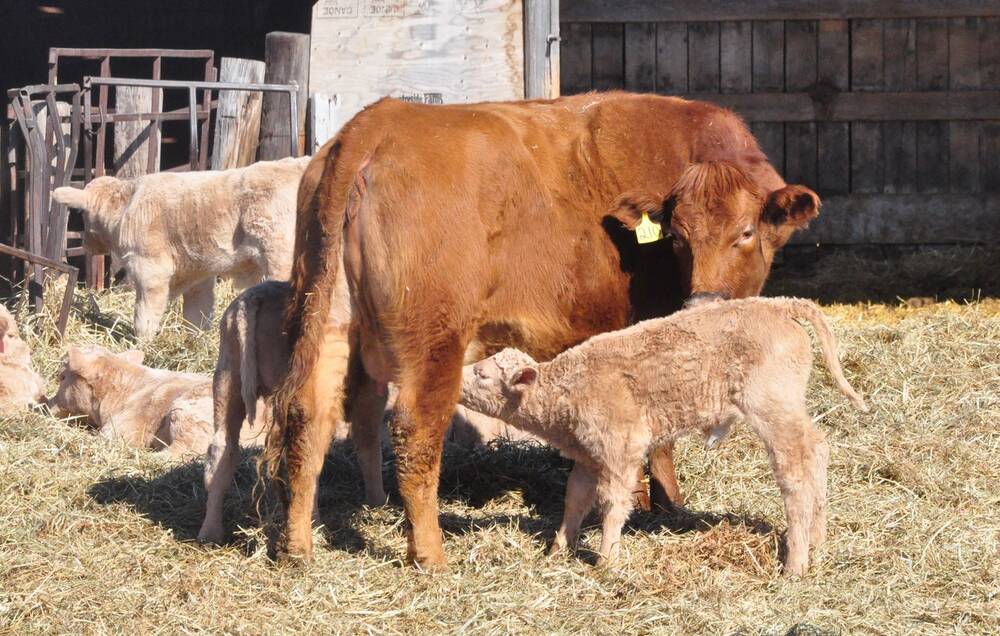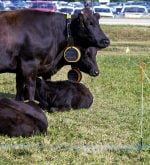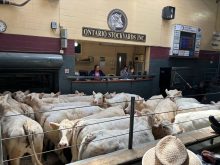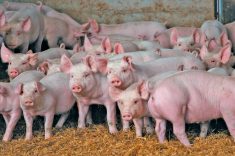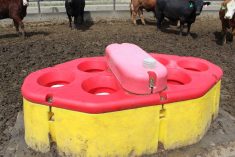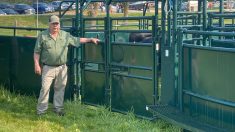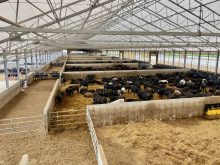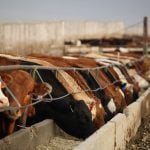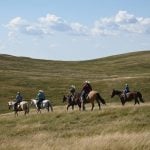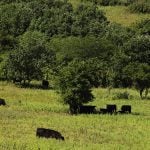Results from the first Canadian Cow-Calf Survey, which gathered insights from 600 producers across Canada, have been published by the Beef Cattle Research Council.
The project is meant to provide a comprehensive assessment of cow-calf production practices and herd performance throughout the country and was spearheaded by the council and Canfax, as well as regional representatives.
Results cover the 2022 breeding season and 2023 weaned calf crop.
Read Also
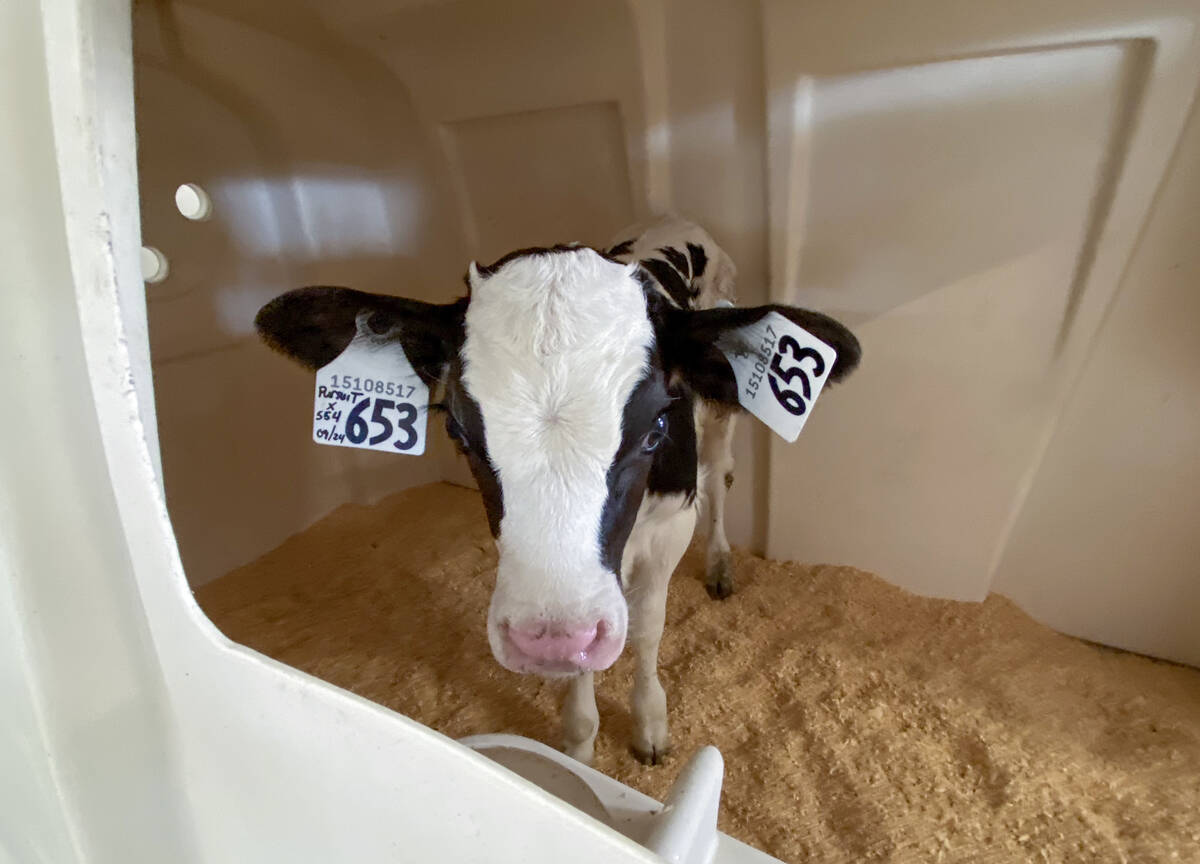
Lactanet turns methane expertise into business opportunity
Lactanet’s new fee-for-service breeding tool initiative to reduce greenhouse gas emissions in Canadian and Swiss Holstein herds will launch in April 2026.
James Byrne, a provincial beef specialist at the Ontario Ministry of Agriculture, said the survey will help producers identify areas for improvement by comparing their practices to national standards.
“It can be really helpful for producers to…read through these particular surveys to identify, ‘Okay, this is the management practices. Here’s what’s happening nationally. How am I doing compared to the national average?’”
The survey shows that there hasn’t been a huge change in on-farm practices in the last few years, Byrne added.
Reproduction
The survey found that breeding season length varies by region, with Alberta and Saskatchewan reporting shorter seasons (80 and 87 days, respectively) compared to Quebec and the Maritimes, where the season was 131 days.
Research has shown advantages with a tighter breeding season (63 days or less), the report noted. Nationally, about 32.3 per cent of respondents met that threshold for cows and 38.4 per cent met it for heifers. Manitoba was under those averages, at 27 and 27.3 per cent, respectively.
In Ontario, it’s 99 days, Byrne said.
“We know that the ideal length of the breeding season is 63 days. That’s really what you would like to have on average…the mean length of the breading season by province in Ontario was 114, so there’s room for improvement.”
The national average open rate for cows in 2022 was 7.4 per cent, while heifers had an 11 per cent open rate. Manitoba reported the highest rates for cows (10.1 per cent) and heifers (13.2 per cent).
Open rates in Ontario are around 9 per cent, with 11 per cent for heifers, Byrne said.
Calving season in Canada averaged 89 days for cows and 59 days for heifers, with Manitoba stretching to 100 days for cows and 70 for heifers.
Experts peg ideal calving season length between 60 and 80 days for the sake of a uniform calf crop and reproductive efficiency, among other reasons. Producers are also told that 60 per cent of females would ideally calve within the first 21 days of the season and 20-25 per cent in the following cycle.
Those numbers aren’t that different from the Ontario standard, Byrne said.
Calf management
On average, Canadian producers wean at 212 days for heifer-born calves and 215 days for cow-born calves. Those born to heifers weighed an average 551 pounds at weaning, compared to 577 lb. among those born to cows.
The survey noted that Canada’s beef cattle code recommends low-stress weaning, which authors said was “key to supporting welfare and disease prevention in freshly weaned calves, thereby reducing the need for antibiotic treatments.”
However, traditional separation remained the most popular choice among survey respondents at 50.8 per cent. Of those using alternative methods, 32.4 per cent used fenceline weaning, while 12 per cent implemented two-stage weaning or nose paddles. Two per cent opted for natural weaning.
Among those using traditional weaning methods, 21.1 per cent lacked the necessary time, labour or resources to adopt alternative weaning methods, 11.9 per cent saw no financial incentive to change their approach and 58.7 per cent said they weaned traditionally because they sold calves right after weaning.
Regardless of method, 60 per cent of respondents sold their calves at weaning. Of those retaining ownership, almost 60 per cent kept calves for over 120 days.
The survey found an average death loss in 2023 of 2.2 per cent for calves born to cows and 3.7 per cent for calves from heifers within 24 hours of birth. Mortality rates between 24 hours and weaning stood at 2.5 per cent for cows’ calves and 2.9 per cent for heifers’ calves.
Producers reported using a variety of resuscitation techniques on unresponsive newborns. Some 37 per cent put calves in the recovery position and rub them and 30 per cent poke a straw or finger into the calf’s nose.
Far fewer producers hang calves upside down, with 66 per cent saying they never use this method, compared to more than half who reported it when industry surveyed western Canadian practices in 2017.
Food and water
Feed testing was common for all Canadian producers; 69 per cent test feed either occasionally or annually. Of those, 48.8 per cent used results to build their own rations, 35.8 per cent worked with a nutritionist and 5.3 per cent got help from an extension specialist.
About 31 per cent said they did not test their feed, since they were confident in cattle health or were uncertain about the process.
There are differences in feed between Ontario and other provinces, especially those in western Canada, Byrne said.
“The performance of beef cattle in feedlot in Ontario is going to be slightly different, because it’s primarily corn-based, whereas if we go to the Prairies, it’s primarily grain,” he explained. “You’re not necessarily comparing like with like.”
Health care
Most herds (94 per cent) were vaccinated, with highest rates for clostridial, reproductive and bovine respiratory diseases.
Remote drug delivery devices are not widely used, the survey showed, with 63.3 per cent of respondents reporting they never use them. Producers who do use them do so for foot rot and eye infections.
Over half of respondents (53.4) also said they did not use pain mitigation for castration, primarily because calves are typically castrated before three months.
Pain control use while castrating in Ontario falls in line with those numbers, Byrne said.
Records
Most producers – 79.2 per cent – use paper records, while 47.8 per cent rely on spreadsheets. Just under 18 per cent use electronic cattle management software.
Future work
Results of the survey will be used to guide research and policy priorities to improve sustainability and profitability, according to the research council.
Byrne is hopeful that during that time, the survey results will help move the industry forward.
“It allows them to go on to identify where there would [need] to be improvements, from the extension service perspective, [and] I think from the producer perspective, to identify those practices.”
The organization plans to conduct this survey every five years.




